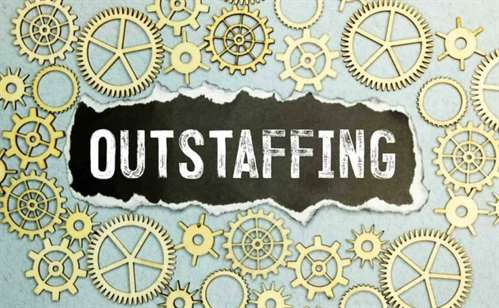Both data mesh and knowledge cloth provide distinct advantages for organizations trying to enhance their data administration and analytics capabilities. In contrast, the info cloth architecture advocates centralization and unified data entry. Both are valuable approaches to democratizing data and insights, but they differ of their underlying philosophy and architecture. The core principle driving the info mesh is rectifying the incongruence between the data lake and the information warehouse, as we wrote earlier this yr. Dehghani writes about a third-generation system (Kappa) marked by real-time information flows and embrace of cloud services, but it doesn’t solve the underlying usability gap between first- and second-generation systems. But it’s necessary to note that the administration is unified, not the actual storage, which stays distributed.
This takes time to teach and domesticate, however key team members ought to discover methods to read charts and graphs, perceive what information is necessary, and know how to maintain the info clean and arranged. A whole generation of query engines (sometimes called query accelerators) make knowledge mesh possible, too. Solutions like Dremio, Starburst, and Druid primarily concentrate on analyzing exterior tables. They typically lack ACID compliance and the flexibility to do analytics with excessive concurrency, however they are often helpful in the information mesh mission. More and more conventional databases have added question engines to permit for seamless querying in a database and a knowledge lake. BMC Software (BMC) helps companies harness know-how to enhance the delivery and consumption of digital providers.

Organizations that have a robust need for information governance, compliance, and data consistency across their departments and business models often use a centralized information integration layer in their data structure. Some components you may find in a microservices structure for data mesh can embody domain-oriented microservices that a group may create and preserve to handle information ingestion, transformation, and management. Data processing pipelines that focus on specific processing tasks and API management tools for selling collaboration are also typical elements. In modern information architectures approaches, Data Mesh and Data Fabric stand out among the others. These approaches may be defined as frameworks or designs that assist us going through these new challenges.
The Battle For Managed Freedom Of The Information Warehouse
Data mesh and data fabric each present a knowledge structure that enables an built-in, linked knowledge experience across a distributed, advanced data landscape. By contemplating the survey insights, you can choose an approach that aligns best along with your organization’s needs and addresses the ache points of your small business users. This will finally result in a more practical knowledge platform that empowers customers with related data and insights, enabling them to make data-driven decisions. If information quality and trust are driving elements, then the information fabric approach could be higher as it helps in centralizing information governance, thereby guaranteeing consistent high quality throughout the group.
And the pizza brand is utilizing a knowledge fabric structure to convey that information collectively and provide a 360-degree buyer view. Put as merely as potential, a knowledge fabric is an information platform structure framework with a layer of know-how that separates your information out of your applications. This creates a centralized community of all your information, the place connections and relationships could be identified freely—without relying on point-to-point integrations between specific purposes or datasets.
Typically, this information is structured in idea, so the project becomes engineering that conceptual model into the information warehouse as well as the processes that transform and cargo the source data. They enable you to wrangle harrowing data landscapes across trendy and legacy systems effectively and successfully. Historically, when you consider enterprise data, words like “agile” and “flexible” don’t come to mind. It has never been easier for knowledge assortment to spiral uncontrolled, with so many disparate techniques available to collect copious quantities of knowledge,compounded by the relative ease of adding new systems to your corporation ecosystem.
What Is A Knowledge Fabric?
So data teams might want to construct their own information fabric by combining out-of-the-box and homegrown solutions—which any data engineer knows wlll take appreciable effort and time to construct and preserve. A information cloth is useful as a end result of it makes it easy for shoppers to find insights and entry the data they should do their jobs. According to Gartner, this occurs when the information cloth creates information graphs. With a semantic layer that’s simple to interpret and allows teams to extract meaning from knowledge, knowledge graphs deliver the value of the data material to shoppers.

To build a data fabric, you have to leverage automation across your applications and datasets. First defined by Zhamak Dehghani in 2019, information mesh provides an different to the monolithic architectures of many legacy information ecosystems. These older techniques usually centralized knowledge ownership under choose technical stakeholders and, in flip, bottlenecked knowledge access and use as a result of manual processes. Modak’s Data Engineering Studio supplies best-in-class supply companies, managed data operations, enterprise knowledge lake, information mesh, augmented data preparation, information high quality, and governed knowledge lake solutions.
Data Mesh Vs Information Fabric: Understanding The Variations
And as far as information governance, robust leadership, training, and best practices inside the enterprise can overcome the inherent challenges of doing distributed governance. Both data fabrics and information meshes are helpful knowledge architectures for businesses. It’s attainable for organizations to use each, however they would need to determine when to centralize data (a fabric) and when to distribute it to completely different teams (a mesh). Each method is useful but requires cautious planning and knowledge protection methods. It addresses the complexity of data management and minimizes disruption to knowledge shoppers.
- Data mesh permits domain groups to take possession and manage their data products.
- With the fast-moving improvement and adoption of latest cloud information platforms on prime of present legacy instruments, there is often an absence of cohesion within the knowledge stack.
- Providing users with self-service access to the info that they should achieve their objectives is the core of a mesh framework.
- On the opposite hand, a Data Fabric method comes handy when the automation of many tasks of the product lifecycle is needed.
- Specifically, data material solutions ship capabilities in the areas of data access, discovery, transformation, integration, safety, governance, lineage, and orchestration.
- With Informatica, BMC built a useful system in a really quick time frame.
Some options require knowledge to be stored in particular codecs in information warehouses and offer no assist for knowledge lakes. Look for an answer that can handle widespread codecs, (like ORC, PARQUET, AVRO, JSON) and leverage those sources into every day evaluation with grace and pace. Look for options that can attain into different databases in your group (data virtualization) in order that no knowledge is troublesome to entry. Data cloth solutions will have a tendency to mix extra tools to resolve your disparate information drawback. They would possibly embrace higher transformation capabilities, enhanced fine-grained safety, graphical interfaces for governance and the lineage. However, if there is a weak point in knowledge cloth is that you’ll in all probability need to spend significant effort in creating/managing a semantic layer.
For instance, the “Risk Management” group develops data merchandise like “Fraud Detection API”, “Credit Scoring Model”, and “Market Risk Analytics Dashboard.” Because data mesh helps to interrupt down data silos and increase entry to high-quality knowledge, it could create important advantages for analytics and AI/ML teams. With direct access to the data they want, they can work extra autonomously and effectively, collaborate extra successfully, and iterate and experiment with data sooner. Data mesh structures knowledge resources in a method that locations users in charge of their respective domains. Providing users with self-service access to the information that they need to achieve their aims is the core of a mesh framework.
For occasion, if data accessibility is a significant problem, then the data mesh method may be extra suitable because it promotes domain-specific knowledge ownership and accessibility. A information maturity survey may help you perceive the current state of information management within your group and information you in choosing between data mesh and data cloth. However, a decentralized approach like the info mesh can result in inconsistencies in data quality practices throughout different groups, which may influence the general knowledge high quality inside the group. Data material can help organizations in simplifying their data infrastructure by abstracting the complexities of integrating completely different information sources and applied sciences. This makes it easier for customers to access and analyze knowledge from multiple sources, reducing the time and effort required to generate insights. The data mesh enables a decentralized method to knowledge possession and governance, allowing for higher agility and scalability within the information processing.
As you start to discover whether or not the info fabric is true for your small business, embody these key leaders in your conversations and start to construct support from the earliest attainable days. Your staunchest advocates will likely be these leaders who feel the ache of hard-to-discover knowledge, slow data mesh vs data fabric time to perception, or handbook knowledge administration processes. Data fabrics are made possible with expertise, however there isn’t yet a single resolution in the marketplace that can present a comprehensive knowledge fabric structure (again, based on Gartner).
The terms ‘data intelligence’ and ‘data analytics’ might as properly be enshrined in marble for… The phrases role-based access control and attribute-based entry control are well-known, however not essentially properly understood — or… Advertise with TechnologyAdvice on Enterprise Storage Forum and our other IT-focused platforms.
Its effectiveness has not been broadly demonstrated for tangible business benefits. Both knowledge mesh and information cloth can offer various advantages but additionally come with some potential drawbacks. Data mesh is a new strategy coined by Zhamak Dehghani that advocates for decentralized data architecture. Google Cloud is also a supporter of the info material strategy with its new Dataplex offering. Integration among the many numerous parts in an information material usually is handled by way of APIs and thru the frequent JSON knowledge format. To protect buyer information by complying with ever-emerging regional data privacy laws, like VCDPA, earlier than making it accessible to data consumers within the business domains.
So, a possible problem with data governance in the mesh strategy is maintaining constant governance practices throughout different domain groups. This requires sturdy collaboration and communication, as well as the establishment of organization-wide knowledge governance requirements for all domains. Data fabric https://www.globalcloudteam.com/ provides a unified knowledge platform that simplifies information integration, storage, processing, and entry throughout organizations. The data mesh is a design concept that’s more about individuals and processes, whereas the information fabric is an architecture to deal with data and metadata complexity.